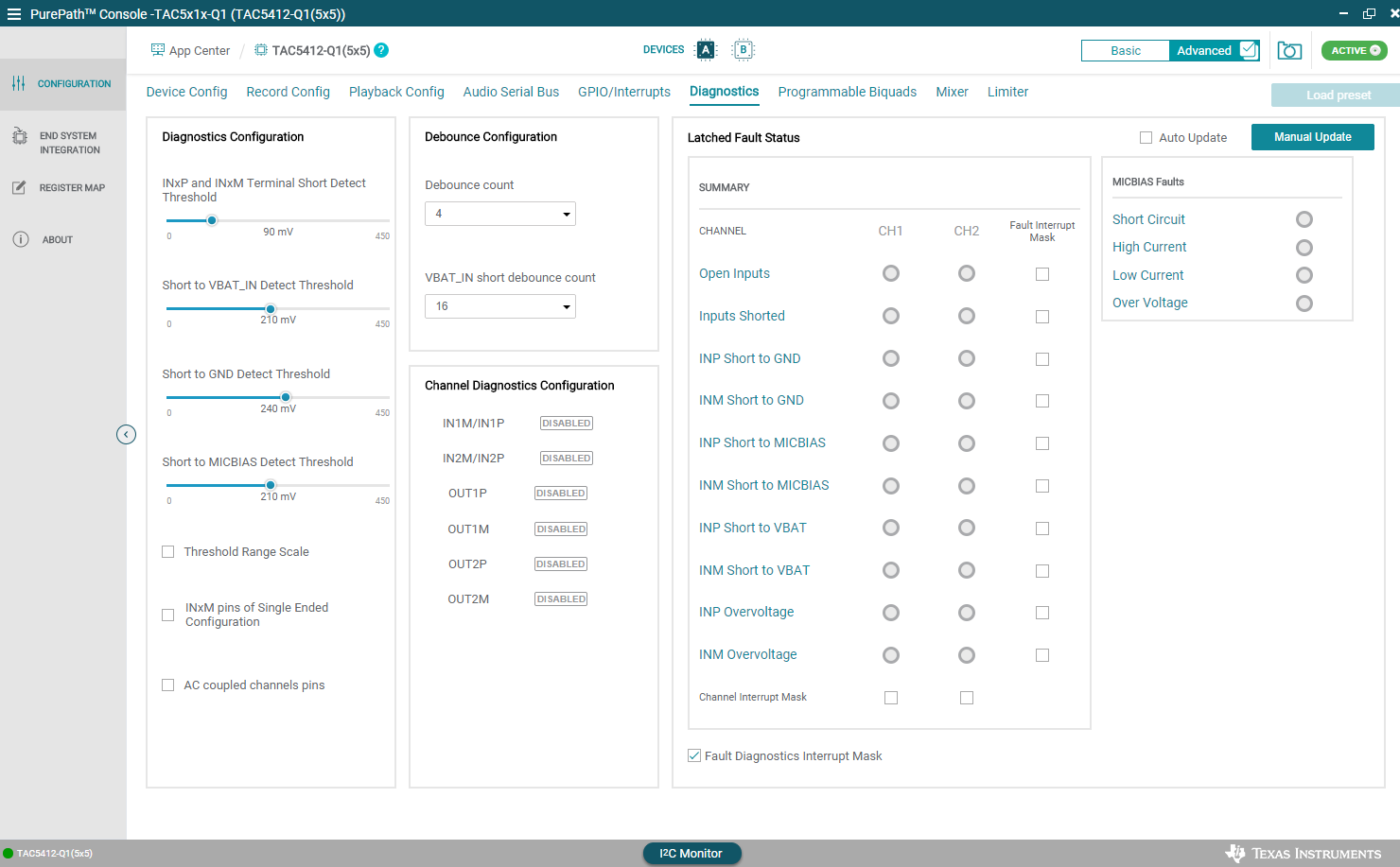SLAAEC6A October 2023 – January 2024
- 1
- Description
- Get Started
- Features
- Applications
- 6
- 1Evaluation Module Overview
-
2Hardware
- 2.1 System Overview
- 2.2
Hardware Overview
- 2.2.1 AC-MB Settings
- 2.2.2 TAx5x1xQ1EVM-K Hardware Settings
- 2.2.3 Diagnostics Hardware Setup
- 2.2.4 GPIO1 Hardware Configurations
- 2.2.5 GPO1A Hardware Configurations
- 2.2.6 GPI1A Hardware Configurations
- 2.2.7 GPI2A Hardware Configurations
- 2.2.8 I2C Address Hardware Configurations
- 2.2.9 Audio Serial Interface Hardware Configurations
-
3Software
- 3.1 Software Description
- 3.2 PurePath Console 3 Installation
- 3.3
TAx5x1x-Q1 EVM GUI
- 3.3.1 Software Overview
- 3.3.2 Configuration View
- 3.3.3 End System Integration View
- 3.3.4 Register Map View
- 3.3.5 Preset Configuration
- 3.3.6 I2C Monitor View
- 3.4 Configuration Examples
- 4Hardware Design Files
- 5Additional Information
- 6Revision History
3.3.2.6.1 Diagnostic Tab
The diagnostics tab allows for the configuration and monitoring of the integrated diagnostics features of the TAx5x1x-Q1 devices. To enable diagnostic MICBIAS and PLL are required, so a message appears to allow user to turn them on. Click the Turn On button to enable diagnostic and the display is as shown below.
The latched fault status window also includes controls for mask interrupt. Any masked faults are displayed when a mask is enabled; however, these masks do not trigger an interrupt. Check the "Auto Update" button to automatically update the diagnostic status flag. Some diagnostic settings are available on the left hand side if needed.
 Figure 3-23 Diagnostic Tab
Figure 3-23 Diagnostic Tab